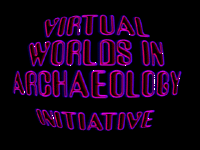 |
Virtual Worlds |
Medieval Turku -- The Lost City |
|
| page updated 9/27/99 |
 |
Virtual Worlds |
Medieval Turku -- The Lost City |
|
A vivid commercial network was established in the Baltic Sea area during the Middle Ages, mostly through the influence of German merchants of the Hanseatic League. Well organized towns were established on the southern coast of the Baltic already in the 12th century, and from the beginning of the 13th century, also in Sweden, Finland and the Baltic states. Typical for these towns was that the majority of the leading merchants were German and that the towns were equipped with handsome churches, town halls and stone buildings. The only significant Middle Age town in Finland - Turku - was one these regional centers, through which furs and miscellaneous products of the northern forests were hauled to Europe.
The
Medieval city plan of Turku was preserved until the beginning of the 19th
century, when a disastrous city fire destroyed the entire city to the ground.
What remained was leveled under a 2 -3 meters thick layer of fill, and
the new, Empire-style city was built on top of the old. Research of the
old, lost city has been conducted by archaeologists and historians during
various excavations for more than a century. In the beginning of the 1990s
a large excavation was started in the very core of the Middle Age town,
where the museum "Aboa Vetus" presently resides. Several Medieval streets,
city blocks, and buildings were discovered during these excavations, and
the idea of creating a reconstruction of the Medieval city of Turku was
born.
|
(click on the image for a detail view, 145k) |
(click on the image for a detail view, 210k) |
All
available archaeological and historical data has been used in the 3D reconstruction
of the medieval city of Turku. Historically recorded differences in the
social status and its influence on the buildings of various parts of the
town were noted. The initial goal was to construct a model of the town
at the end of the 15th century, of a clearly distinct period, which would
enable the use of historical data regarding
city fires and other events. The exact time frame placed demands on the
model in terms of the layering of the constructional history of the town;
some buildings were old and tattered, some were usable, while others were
new and in a good condition.
|
(click on the image for a detail view, 435k) |
(click on the image for a detail view, 140k) |
The software used in the project comprises various versions of AutoCadTM (presently Release 14), which was used to create the basic model, which was then transformed into the 3D Studio MaxTM environment (presently Release 2). The 3D Studio MaxTM software was utilized to create different animated sequences of the town, which present both airborne and street-level views. In 1998, a VRML model was added, created by using Max technology and run with the CosmoTM Player software.
The Lost City virtual presentation was opened at the Aboa Vetus museum in April, 1998, and it will be updated during the following years. A broad database is linked to the presentation, which will inform the visitors of the Middle Ages and the research regarding it.
The project creators can be reached at: kari.uotila@kolumbus.fi or minna.sartes@utu.fi
For information on becoming a participant, on submitting virtual worlds to the INITIATIVE, or to ask us about the INITIATIVE, please contact us at: info@learningsites.com